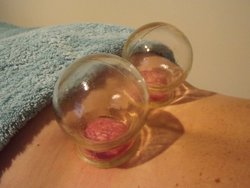 Brazilian university researchers studying acupuncture for spinal pain, have found that ear acupuncture reduces the degree of disability in sufferers. In a clinical trial, 110 people aged 18 to 80 were randomised into three groups: true acupuncture, placebo acupuncture and a no-treatment control group. Both treatment groups received five sessions, over six weeks.
Brazilian university researchers studying acupuncture for spinal pain, have found that ear acupuncture reduces the degree of disability in sufferers. In a clinical trial, 110 people aged 18 to 80 were randomised into three groups: true acupuncture, placebo acupuncture and a no-treatment control group. Both treatment groups received five sessions, over six weeks.
Compared with initial assessment, the team observed a significant reduction in disability in the treatment and placebo groups, by one week after sessions ended, and again at 15 day follow-up. The true acupuncture group however, experienced a greater reduction in disability.
(Action of ear acupuncture in people with chronic pain in the spinal column: a randomized clinical trial. Revista Latino-Americana de Enfermagem, 3 September 2018.)

 A large matched cohort study undertaken in Korea, suggests that having acupuncture treatment for lower back pain is associated with less likelihood of eventually needing lower back surgery. Using a nationwide insurance database, researchers identified all newly-diagnosed cases of lower back pain over a six year period, and separated out the subset who had had a course of acupuncture. After matching, over 130 000 patients were included in each of an acupuncture and non-acupuncture group. The lumbar surgery rate in the two years following a first acupuncture session was calculated.
A large matched cohort study undertaken in Korea, suggests that having acupuncture treatment for lower back pain is associated with less likelihood of eventually needing lower back surgery. Using a nationwide insurance database, researchers identified all newly-diagnosed cases of lower back pain over a six year period, and separated out the subset who had had a course of acupuncture. After matching, over 130 000 patients were included in each of an acupuncture and non-acupuncture group. The lumbar surgery rate in the two years following a first acupuncture session was calculated. Authors of a study in Japan looking at acupuncture for spinal stenosis of the lumbar region, have concluded that it is more effective than either medication or physical exercise. A total of 109 patients with L5 root radiculopathy associated with lumbar spinal stenosis, visiting Iwai Orthopaedic Medical Hospital for surgical treatment, were assigned to receive either paracetamol (900mg three times a day), exercise therapy, or acupuncture (five sessions) over a period of four weeks. All groups were permitted to use additional non-steroidal anti-inflammatory drugs as required for pain control.
Authors of a study in Japan looking at acupuncture for spinal stenosis of the lumbar region, have concluded that it is more effective than either medication or physical exercise. A total of 109 patients with L5 root radiculopathy associated with lumbar spinal stenosis, visiting Iwai Orthopaedic Medical Hospital for surgical treatment, were assigned to receive either paracetamol (900mg three times a day), exercise therapy, or acupuncture (five sessions) over a period of four weeks. All groups were permitted to use additional non-steroidal anti-inflammatory drugs as required for pain control.  Clinicians in Berlin, Germany have shown that cupping for lower back pain, combined with analgesics, is more effective than analgesics alone. In the four week study they performed, 110 patients aged 18 to 65 were randomised to receive either eight sessions of cupping, plus paracetamol as required, or low suction cupping plus paracetamol as required, or paracetamol alone as required.
Clinicians in Berlin, Germany have shown that cupping for lower back pain, combined with analgesics, is more effective than analgesics alone. In the four week study they performed, 110 patients aged 18 to 65 were randomised to receive either eight sessions of cupping, plus paracetamol as required, or low suction cupping plus paracetamol as required, or paracetamol alone as required. A small UK-New Zealand exploratory study suggests a trend of increased benefits after ten sessions of adjunctive acupuncture for lower back pain of a chronic nature. A total of 45 patients were randomly allocated to receive usual care plus either four, seven or ten acupuncture treatments. Outcome measures including back function, pain and disability, suggested that at the 12 week point, the 10 session group experienced most benefit. Over 90% of the study participants felt “very satisfied” &/or “extremely satisfied” with acupuncture treatment.
A small UK-New Zealand exploratory study suggests a trend of increased benefits after ten sessions of adjunctive acupuncture for lower back pain of a chronic nature. A total of 45 patients were randomly allocated to receive usual care plus either four, seven or ten acupuncture treatments. Outcome measures including back function, pain and disability, suggested that at the 12 week point, the 10 session group experienced most benefit. Over 90% of the study participants felt “very satisfied” &/or “extremely satisfied” with acupuncture treatment.